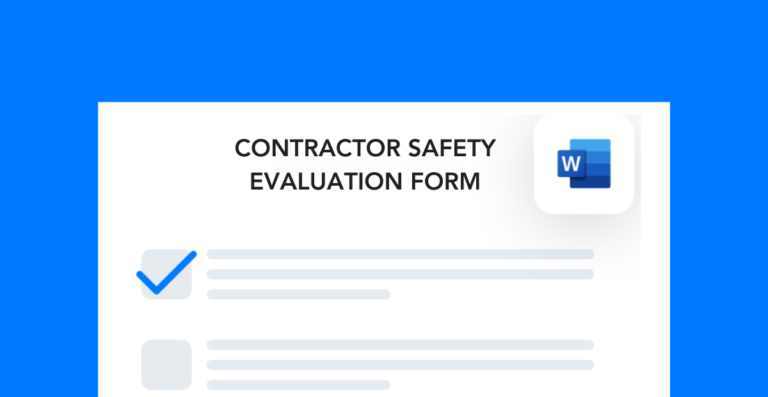When deciding whether to work with a contractor, it’s important to assess their safety compliance approach. At the end of the day, you’re responsible for making sure all your employees, regardless of their status, work according to regulatory requirements. Use this contractor safety procedure checklist to evaluate all the contractors you’re hiring.
General contractor information
Before doing a contractor safety procedure review, start by verifying this general information:
- Contact information (phone, address, email)
- Certifications and licenses
- Insurance coverage
Not only do you want to check that contractors have these, but you also want to make sure they’re up to date. Having expired licenses or lapsed insurance coverage is a sign that the contractor doesn’t take care of the small details. Ask yourself: “If the contractor takes forever to provide this information or it’s incorrect and incomplete, how good will they be at managing a major project?”
Safety documentation and recordkeeping
A big component of compliance is keeping detailed and organized records of incidents. You can tell a lot about a contractor by how they manage their data. Don’t forget to:
- Verify that the contractor has all necessary work permits.
- Read and evaluate the contractor’s safety plan.
- Review past safety inspection records, citations, etc.
- Assess the contractor’s emergency safety plan.
- Make sure the contractor keeps detailed and up-to-date training records.
Of course, there may be other documents to review depending on the type of work you want a contractor to do. A best practice is to look at the same documents that your company keeps on hand and see if the contractor’s documentation aligns with your standards.
Policies and procedures
Oftentimes, contractors will be directly managing their employees on your worksite. So, it’s critical to verify that their policies and procedures meet your expectations for safety. Review contractor safety procedure documents for the following components:
- Enforcement of safety policies
- Legal and regulatory compliance
- Safety training program
- Roles and responsibilities for safety
- Emergency response procedure
- Incident reporting and follow-up
- Hazard identification and assessment
- Hazard communication procedures/method
- Risk mitigation protocols
- PPE and equipment maintenance
- Incident investigation
- Corrective and preventive action (CAPA) plan
What you’re looking for is how thorough and realistic the contractor safety procedures are. It’s important to choose contractors who take a proactive, rather than a reactive approach.
Execution of contractor safety procedure
If possible, I highly recommend checking out potential contractors in person before hiring them. This is especially important for long-term projects. You don’t want to get stuck working with someone you don’t get along with.
But doing an in-person assessment can also tell you about how they execute safety procedures in real life. Observing things like PPE use and site organization provides clues about how much a contractor values safety.
Once you hire a contractor, it’s important to support their safety procedures with your own. For example, if you have very specific processes at your site, you’ll need to make sure all contract employees have training on them. You’ll also need to provide supplementary safety equipment, PPE, and other resources as well. If you help contractors maintain compliance, you can protect yourself against litigation, citations, and other consequences of a mismanaged EHS program.




